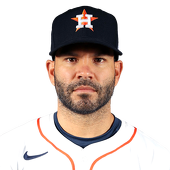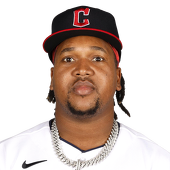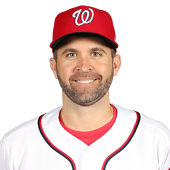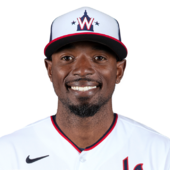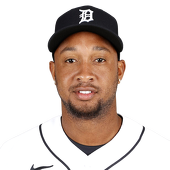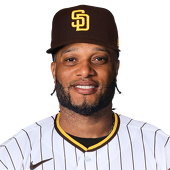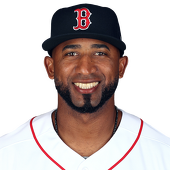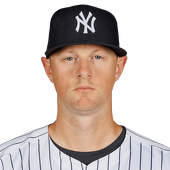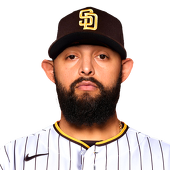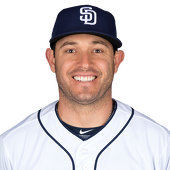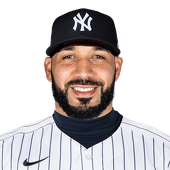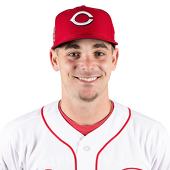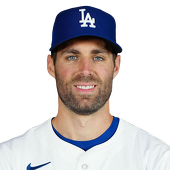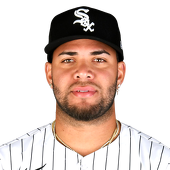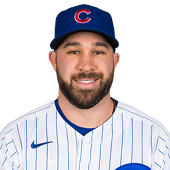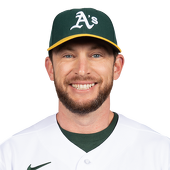Previewing 2018 Fantasy Baseball Rankings: Jose Ramirez gives second base another early-round option – CBSSports.com
More position previews: Catcher | First base
No owner in a standard-size league should feel left out at second base.
That isn’t to say every player in the top 12 is entirely risk-free, but the drop-off thereafter is gradual, extending beyond even the 20 shown here. You’ll have someone to fall back on, in all likelihood, so you shouldn’t worry too much about messing it up.
But you can gain a real advantage at the position. While second base offers a surplus of alike options, it’s lacking in true standouts, featuring four if you count
Brian Dozier
and three if you don’t.
And that number has risen from a year ago.
Note: These rankings are intended to be just a first glimpse and aren’t tailored for any specific format. In cases where the format would make a big difference, that difference is noted.
| 1 | |
| A standout at any position, Jose Altuve remains a go-to for batting average and stolen bases in an era when both are in short supply. And he’s no slouch in the power categories, as he has now proven twice over. |
|
| 2 | |
| And you thought Jose Ramirez 2016 was too good to be true. The 25-year-old found another gear in 2017, upping his power production in a way better supported by the batted-ball data than even last year’s “breakthrough.” He’s about a dozen steals shy of being another Altuve. |
|
| 3 | |
| Going strictly by the numbers, the line between Ramirez and Daniel Murphy is thin enough to give the edge to the more proven player, but Murphy is eight years older and frequently slowed by a nagging injury of some kind. Oh, and Ramirez is also eligible at third base, which could turn out to be useful. |
|
| 4 | |
| After another redemptive second half (though this time, not one that had him threatening the single-season record for home runs by a second baseman), Brian Dozier once again finds himself on the border of elite status at the position, but perhaps we should know better than to think he’ll sustain it over a full season this time. Still, if you can live with the batting average, you can trust him to help in every other area. | |
| 5 | |
| There’s a definitive drop here in terms of overall impact, but Dee Gordon remains plenty impactful for his ability to dominate in stolen bases, which you may have heard are in short supply these days. It’s enough to entrench him in the second tier in points leagues, too, especially now that his disappointing 2016 appears to be the aberration. |
|
| 6 | |
Jonathan Schoop continued his steady climb in 2017, more or less matching the power production of the position’s preeminent power hitter, Brian Dozier. A swing-at-everything type, here’s hoping he doesn’t fall into the bad habits Rougned Odor did after his first 30-homer season. |
|
| 7 | |
| One of these things is not like the others, and unfortunately for Robinson Cano , it’s his 39-homer 2016. His other three years with the Mariners have been remarkably similar and remarkably unremarkable, though he remains a steady source of batting average whose strikeout rate gives him a slight boost in points leagues. Don’t expect a major turnaround for the soon-to-be 35-year-old. |
|
| 8 | |
| So … I’m shortchanging Whit Merrifield , then? He was substantially better than Cano in 2017, after all, and would appear to be on the upswing as a 28-year-old. But that’s just it: He only started doing these things at 28 — and after a mostly lackluster minor-league career. Don’t get me wrong: His stat line is worth the gamble in the first half of drafts still, but we all remember Aledmys Diaz . |
|
| 9 | |
| Playing time has been a perpetual concern for Eduardo Nunez even as he has emerged as reliable table-setter the last two years, and now that he’s on the open market, there’s still the danger of him signing up for a less-than-everyday utility role. In terms of production, he has been nearly as good as Merrifield, but for two years now instead of one. |
|
| 10 | |
| If you eliminate the stolen bases of Merrifield and Nunez and cut their home run totals in half, you get DJ LeMahieu — a high-contact, high-floor guy whose greatest strength is playing half his games at Coors Field. With its thin air and supersized outfield, it’s a dream for hitters who put the ball in play, which makes LeMahieu a perennial batting title contender, if nothing more. |
|
| 11 | |
| Back-to-back 30-homer seasons is a big deal among second basemen, but unfortunately, Rougned Odor had to sacrifice every other means of production to achieve it. He’ll need to cut down on his strikeouts and way down on his pop-ups to get back to being the Fantasy darling he once was, but at only 24, his tools are too loud to dismiss. | |
| 12 | |
Ian Kinsler took a notable step back in 2017, but seeing as he improved both his strikeout and walk rates while contributing a comparable number of home runs and stolen bases, it wasn’t a case of him simply getting old. You wouldn’t normally ask for a bounce-back season from a 35-year-old, but he’s a fine candidate for one. |
|
| 13 | |
Marwin Gonzalez gets bonus points for his eligibility at shortstop, which remains the thinner position even if it’s heavier at the top, but the production itself would put him in this range if I could trust him to play every day in what’s becoming an increasingly loaded Astros lineup. The second-half slippage also makes me wary of a player with a mostly uninspiring track record. |
|
| 14 | |
| Speaking of uninspiring track records, Scooter Gennett was cast aside by a Brewers organization looking under every rock for value, so it’s fair to question the legitimacy of a season in which he doubled his previous career high in home runs. But he didn’t slow down after assuming a regular role in June, and if the power is legitimate, the rest of his line probably is, too. |
|
| 15 | |
| Among the out-of-nowhere second base breakouts (Merrifield and Gennett being the others), Chris Taylor was the one sporting an absurdly high BABIP most of the year, and it eventually came home to roost. But it doesn’t explain the power spike, which he attributes to a mechanical change. His strikeouts put him at risk of total collapse, but if he can just repeat the home runs and stolen bases, he’ll be worth it here. |
|
| 16 | |
| After a bumpy transition to the majors, Yoan Moncada showed in September exactly why some publications have considered the top prospect in baseball for the better part of two years now, and his potential for power and speed gives him top-five upside at the position. It was just a glimmer of success, though — and with still a discouraging strikeout rate — so I’ll play it safe with him. |
|
| 17 | |
Ozzie Albies ‘ tools aren’t as loud as those of Moncada, but the 20-year-old made a smoother transition to the majors, demonstrating a much higher contact rate and enough extra-base pop to suggest his prime years will be special, perhaps even Jose Ramirez-like. His prime is still probably a ways off, though, and the position’s depth gives you no incentive to reach for him. |
|
| 18 | |
| Whatever frustrations Jason Kipnis ‘ inconsistencies might have brought in years past were nothing compared to his 2017, when the Indians weren’t even motivated to return him to everyday duty after his third and final DL stint. Still, he’s only 30 and continued to make contact at his usual rate. There’s hope for a bounce-back, but it may require a change of scenery. |
|
| 19 | |
Dustin Pedroia remains an excellent contact hitter with a keen batting eye at age 34, but in an era when everyone who’s anyone hits for power, his completely evaporated in 2017. He’s also becoming increasingly brittle, so even if he bounces back to some degree, you may not get the full benefit of it. |
|
| 20 | |
Jed Lowrie extra-base power and plus plate discipline make him a relevant player in points leagues, if nothing else, and even just five years ago, the numbers he put up in 2017 would have made him a fixture everywhere. But the threshold is so high now that he has no hope of becoming a true standout, and his track record is so spotty that you can’t even count on a repeat season. |
|

